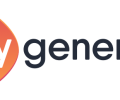 The Learning Circuits Big Question this month is: How do you address the “I want it now!” demand from stakeholders? We had a lot of discussion on this question but I would like to approach this months question from the perspective of the e-learning author. The on demand question has a big effect on them. Usually we use a waterfall method when developing e-Learning. The most used one is the ADDIE model, where development has five phases:Analysis, Design, Development, Implementation and Evaluation. It worked for years but it takes a long time to go through all the phases, not really suited for on demand responses. We need to get faster and more iterative.
The Learning Circuits Big Question this month is: How do you address the “I want it now!” demand from stakeholders? We had a lot of discussion on this question but I would like to approach this months question from the perspective of the e-learning author. The on demand question has a big effect on them. Usually we use a waterfall method when developing e-Learning. The most used one is the ADDIE model, where development has five phases:Analysis, Design, Development, Implementation and Evaluation. It worked for years but it takes a long time to go through all the phases, not really suited for on demand responses. We need to get faster and more iterative.
In software development we have the same problem. We did e-Learning development through waterfall models for years, but now we have the agile approach. We do our software development at easygenerator through an agile method and I love it! I wrote a blog about it a short time ago. What you do is that you work in short sprints (two weeks) having a delivery at the end of a sprint. It will be a working product. This allows you to interact with your end users a lot more, get their input and take it with you in the next sprint. It really works. We build the new easygenerator version in 3 months. And not only it is on time, it has more (and some different things) than we planned for, it works and it is stable. So I thought this methodology could work for e-Learning content creation as well.
But as always it is hard to be original. Last week at the Learning solution conference there was a presentation on this subject and a I found a lot of interesting information on the subject. Therefore instead of enlightening you with my original work, I decided to give you a short overview of my most interesting findings.
Sumeet Moghe wrote a post in his blog ‘The Learning Generalist‘ on agile content development. He gives an overview on how it works and even ties it to action mapping. An excellent overview and he comments on it from is own experience. Great starting point.
Catherine Lang, and Jay Thayer of Salesforce.com gave a presentation at the Learning Solutions conference in Orlando titled: Exploring the Agile Approach to e-Learning Development. They describe why they turned to an agile approach, how it works, lessons learned, tools to use and why it works for them. Interesting reading material.
An other interesting post can be found on the Integrated Learning Services blog, the author Jay Lambert is a strong defender of ADDIE. He wrote a blog on how to make ADDIE more agile by making it circular. It could be a starting point if you decide to explore this direction. In my experience with agile development it is very hard to be a bit agile, but it is a step in the right direction.
Antonio Guadagno & Matthew Tang recently presented in an online forum where they apply agile techniques they picked up from game development to e-learning. It also presents a very practical approach with lots of tips.
From my experience in software development and from reading I did I got convinced that this is an interesting approach to explore. Especially if you combine this with output learning to connect it to the workplace, learning nuggets to make it more adept and dynamic publishing principles. It will bring us closer to our goal: Bringing learning to the workplace. We will hear much more of the agile approach in the future.




